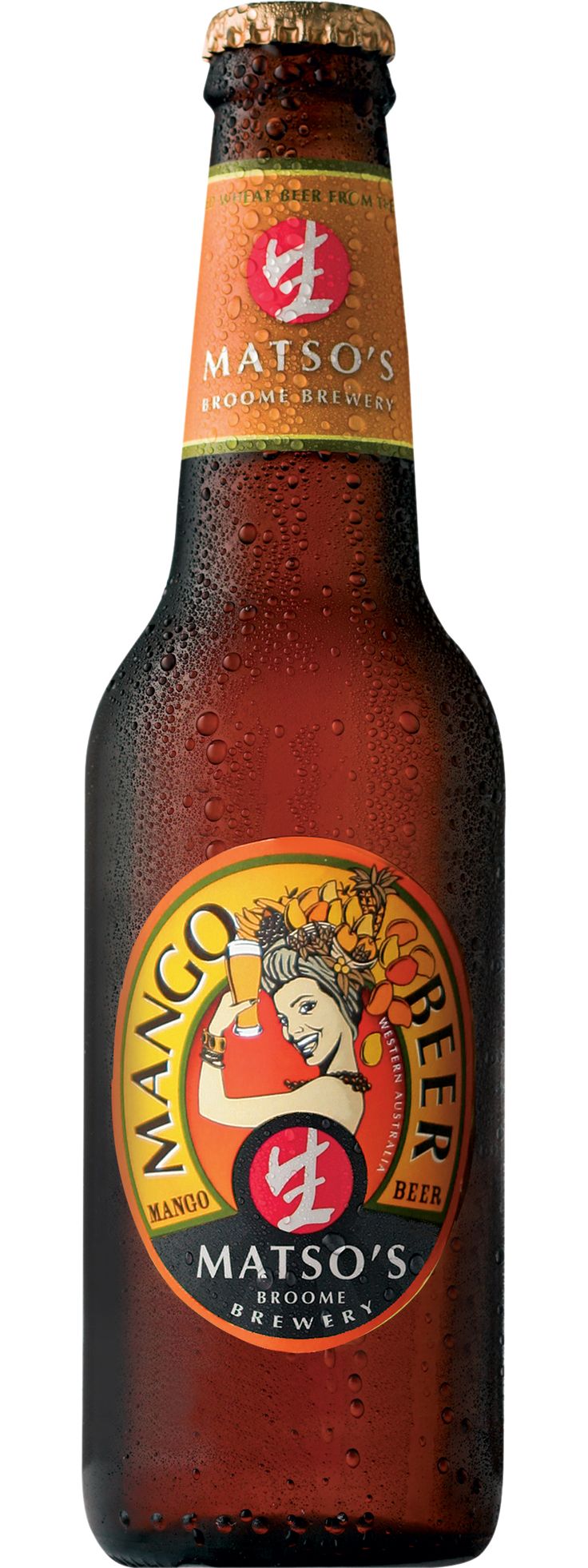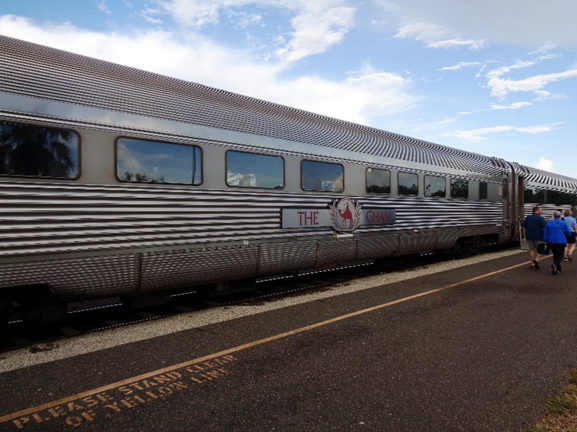
Matso's Mango beer.
Orwell Astronomical Society (Ipswich)
Solar Hybrid Eclipse,
20 April 2023
The eclipse of 20 April 2023 was hybrid, meaning that it was annular at the start and end of the track and total in the middle. The track stretched from Indonesia through the Timor Sea and just brushed the north-west tip of Australia, at Exmouth, before heading into the southern Indian Ocean. Event times (UT) were as follows (from the BAA Handbook for 2023):
We arranged a little tour around Australia prior to the eclipse. We decided to take the direct Qantas flight from Heathrow to Perth - just under 17 hours in the air. Travel to Heathrow was uneventful, the Elizabeth Line was working all the way from Liverpool Street to Heathrow, cutting out the need to venture onto the Underground.
Because of a strike/go-slow of airport security staff, we were advised to arrive at the airport four hours before departure, allowing an extra hour for delays. Hotelhoppa bus services were running more regularly than on previous journeys post Covid, and were less full than last time I experienced them. As a result, we arrived at the airport in good time and, of course, passed straight through departures and then had to wait! The Qantas business lounge has stopped serving champagne, offering instead only sparkling wine. I can understand this, given the number of corks popped while we were there!
The flight was good, but an-over helpful Qantas agent in Heathrow, and a less than helpful one in Perth, did not do much for the experience! It appears that if you don’t have a smartphone you have problems - paperless flights are now the norm!
Despite all the food and beverages (real champagne!) on board the flight, I didn’t sleep a wink and arrived in Perth completely drained. Luckily our overnight airport appartments in the city offered a free airport shuttle service: it just cost $4 in phone calls to advise the service operator that we had arrived. We were told to look out for a "silver van" so, of course, arguments ensued: "Is that van silver?..."
The airport appartments offered no food or drink outlets. We were advised to try the Redcliffe Tavern up the road or Hungry Jacks next to it. We tried both. The pub was a quaint Aussie establishment, hangar-like with corrugated iron walls, clearly a former warehouse. I wondered why one of the barmaids was dressed as a bunny girl, and then I remembered that it was Easter Saturday. Alas, this was not the only reason. Western Australia has set the cause of anti-sexism back several decades by introducing "skimpies", of which the establishment was one, where topless or scantily-clad waitresses work during quiet times in an effort to encourage trade.
The onward flight to Darwin on Monday was uneventful. We had no transfer booked, but found a very useful group taxi-shuttle which collected several passengers and provided a guided tour of the city whilst taking each to their individual destination – all for $15 each. We arrived at the Double Tree Hotel, where we joined the Astro Trails group and were pleasantly surprised to see our old friend John Mason there to welcome us.
In Darwin, it was the end of monsoon season, so still very wet, but at least the very high temperature dried wet clothes quickly! Our hotel was one of two positioned side by side on the Esplanade. Our side was being decorated, so we had to use the other for bar and restaurant purposes. We got wet on the journey from one side of the hotel to the other. There was lots of wildlife about our chalets – hundreds of little frogs and our pet lizard, Harry.
On Tuesday morning, we had an early start, 6.00am, the first of many. I’m getting too old for this malarkey! Off to Kakadu National Park. We passed Humpty Doo, a military radio station, with acres of antennae of various kinds. Our driver / guide (nick-named "Meat Loaf" because of the more-than-passing resemblance to the singer) was very garrulous – he narrated continuously throughout the two days we spent with him. He certainly knows his stuff, but not when to stop!
Another early start saw us on a dawn cruise to see the sunrise. Cloud prevented us seeing the Sun, but we did see a couple of large crocodiles and some magnificent birds of prey. There was also a last-minute opportunity for a flight over the Jim-Jim Falls. Jim-Jim means lots of Jim, whatever Jim is!
Back to Darwin. There were fewer monsoons as we were then in Banggerreng, one of the six Aboriginal seasons, meaning "knock ‘em down" – referring to the sudden, swift storms preceded by very strong winds blowing down the elephant grass. This time, we stayed in the other Double Tree Hotel, so didn't getting wet going for dinner. My accommodation was a two-floor suite, with stairs up to the bedroom.

Matso's Mango beer.
I always like to find a pleasant beer that I can call the "Beer of the Eclipse". The distinction this time goes to the very pleasant Matso's Mango beer - see left.
Another early start and we were on the Ghan, a train named after the Afghan camel herders who built the road infrastructure in the Northern Territories. The Ghan took us from Darwin all the way down the middle of Australia to Adelaide. Each day on the Ghan includes off-train tours, whether you want them or not! I let myself be "persuaded" to join an afternoon boat trip along Katherine Gorge and, at Alice Springs, to visit the Royal Flying Doctor Service and the School on the Air HQ. At Alice Springs, we had planned a dinner under the stars but, thanks to cyclone Ilsa, it was held under cloud. The odd identifiable object was briefly visible in the heavens, including Canopus, the Southern Cross, and a spectacularly bright Venus. I gave the camel ride a miss this time. Cyclone Ilsa turned out to be more severe than first thought, causing floods in the Adelaide region, which delayed the train for nearly a day. Still, this necessitated several additional hours of free food and drink, and I was even asked to run a quiz!

The Ghan.
We arrived safely in Adelaide about nine hours later than planned, fortunately not enough of a delay to upset our onward travel plans. It was the night of a big football clash, and the locals had just won. The streets were heaving with drunken fans as we tried to find an open restaurant, but everywhere seemed to close at 9.00pm. Eventually, after waiting for the police to arrest a someone for violent robbery, a Japanese restaurant took pity on us and opened. The next day, a Sunday morning, the streets appeared amazingly different!
And so, back to Perth and then on to Fremantle, where we met more familiar faces from eclipses past, including our new tour leader, Nick James. John Mason presented the customary pre-eclipse talk ("the talk") on the Monday prior to the eclipse, before everyone formed into the various observing groups. (We left John at Perth. Three days later, he was to travel to the observing site at Exmouth, flying in and out on the day, with his large group, leaving Perth at 2.00am.) I took a train ride into Perth to look for a post office selling first day covers of eclipse stamps. Not a chance! Everywhere from Alice Springs to Adelaide to Perth and Fremantle had long since sold out. Maybe they would be available in the small village that was to be our observing site...
The observing groups travelled to the viewing site by private charter flight from Perth Airport. Not from the main Perth Airport, but from the private compound where the executive jets park. Despite dire warnings about restrictions on the weight and size of luggage allowed, in practice the airline didn’t mind too much, and we all boarded the 90-minute flight up the west coast of Australia. We flew over over Rottnest Island to Learmonth, an airport and RAAF base near Exmouth, the village which was to be our home for the next three nights. On landing, we travelled by coach to our accommodation, the Exmouth Escape holiday retreat. Our coach driver, whilst hefting our three-weeks' worth of luggage, uttered the priceless comment, "Strewth, you’re only here four days!" Despite the remoteness of Exmouth, tens of thousands of visitors were expected to descend on the town on eclipse day.
Staff at the Exmouth Escape holiday retreat treated our group, and several other large groups, well. Our group, Astro Trails, adopted a leisurely approach, observing from the backyard of our accommodation over three nights. The first night in Exmouth gave us the opportunity to visit a dark sky site at a local turtle beach sanctuary. This provided magnificent views of the Coal Sack Nebula and Large Magellanic Cloud (see below).
Eclipse day, 20 April, dawned. The only cloud in the sky was some minor strato-cumulus on the horizon (which subsequently remained there!) Prior to the eclipse, a large sunspot on the solar disk was just visible to the naked eye protected by a solar viewer (mylar filter). A very nice but very short total eclipse was seen by all. Thank goodness I obeyed the first rule of eclipses – "When all else fails around you, watch the eclipse."
The most striking aspect of the eclipse was that the solar disc seemed much smaller than during previous eclipses. This was an optical illusion given that totality occurred at 11:17am local time, and the Sun was consequently high in the sky. The fact that the eclipse was a hybrid one did mean that the Sun was a little further from the Earth than usual, but this was not enough to produce a noticeable reduction in its apparent size. Being a hybrid eclipse, the disk of the Moon appeared only slightly larger than that of the Sun, the duration of totality was short and the chromosphere was easily visible, appearing a wonderfully reddish-pink surrounded by the solar corona, with at least one massive flare visible to the naked eye (at the eight o'clock position). The corona was, as expected, tight, as the Sun is approaching the peak of its 11-year cycle of activity.
Amongst other things we noted was a darkening more rapid and intense than expected, given the height of the Sun, with the light quality sharpening slowly over a long period. Some observers (not we) saw vague shadow bands. Some observers also noted the approaching shadow, but I was too busy to notice, panicking about equipment not working. Jupiter and Venus were prominent, but Mercury proved too elusive.
I had four experiments planned as follows. With the benefit of hindsight, this was too many!
The evening followed with a celebratory meal and drinks party. Everyone was given four free drinks, but some generous non-drinkers soon found good homes for their unused tokens. All too soon it was back to Perth for a final couple of days wind-down before the journey home.
See Fred Espenak's eclipse web site eclipse.gsfc.nasa.gov/eclipse.html
Paul Whiting, FRAS